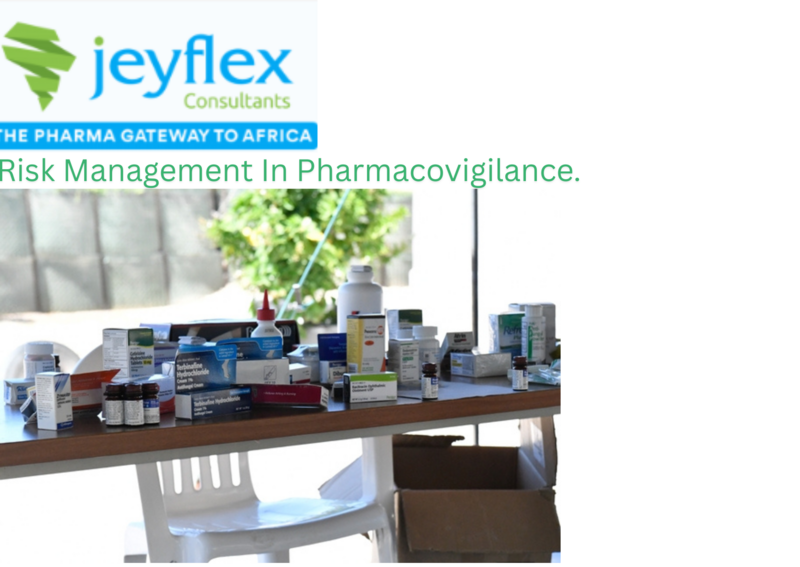What Is Risk Management in Pharmacovigilance?
Risk management in PV is the systematic process of evaluating the safety profile of a medicinal product and implementing strategies to mitigate potential harm throughout its lifecycle.
This involves:
1.Identifying safety concerns and adverse event patterns
2.Characterizing and quantifying risks using available data
3.Planning and executing strategies to reduce risk
4.Monitoring and measuring the effectiveness of those strategies
The foundation of this approach is the Risk Management Plan (RMP),a formal regulatory document required by health authorities such as the EMA and other global regulators.
The RMP outlines how known and potential risks will be managed proactively and transparently.
Core Components of the RMP
A comprehensive RMP consists of several interlinked elements:
1. Safety Specification
This section defines the nature and context of safety concerns:
- Identified Risks: These are adverse effects with strong supporting evidence
- Potential Risks: Suspected risks that require further data for confirmation
- Missing Information: Areas where safety data is lacking—typically involving special populations such as children, pregnant women, or the elderly.
2. Pharmacovigilance Plan
This outlines the activities required to monitor safety concerns:
- Routine Activities: Include adverse event (AE) reporting, periodic safety update reports (PSURs), literature screening, and database review.
- Additional Activities: May include Post-Authorization Safety Studies (PASS) or enhanced data collection strategies for specific risks or populations
- 3. Risk Minimization Measures
Designed to reduce the occurrence or severity of adverse events, these measures fall into two categories:
Risk minimization strategies are broadly categorized into routine and additional measures.
Routine measures include standard regulatory tools such as product labeling, the Summary of Product Characteristics (SmPC), and patient information leaflets. These are designed to provide clear, consistent safety information to both healthcare professionals and patients as part of the product’s normal use.
Additional measures are employed when routine measures alone are insufficient to manage certain risks. These may include educational materials tailored for healthcare professionals or patients, controlled distribution programs to restrict access to the medicine under specific conditions, and targeted training sessions for healthcare providers to ensure safe and informed use of the product.
These measures work together to enhance patient safety and ensure that risk communication is both effective and actionable.
Cross-Functional Collaboration Is Key
Risk management in PV doesn’t exist in a silo. It’s a shared responsibility that requires ongoing coordination between:
i)Regulatory Affairs (RA) – for ensuring compliance with international regulations and maintaining communication with health authorities.
ii)Quality Assurance (QA) – for maintaining documentation, overseeing inspection readiness, and ensuring that SOPs align with safety processes.
iii)Medical Teams – for providing real-world safety insights, patient-reported outcomes, and study data that inform updates to the RMP.
Signal vs. Risk: Clarifying the Difference
One common area of confusion is the distinction between a signal and a risk:
- A signal is an observation or trend that may indicate a new or changing safety concern. It typically arises from data mining, spontaneous reporting, or literature.
- A risk is a validated concern—based on sufficient evidence—that warrants action through labeling, monitoring, or minimization.
Signal management helps PV teams triage and validate these early warnings before they escalate into confirmed risks requiring regulatory action.
How RCA and Risk Management Interconnect
RCA is more than a reactive measure, it’s a critical feedback mechanism within the risk management cycle.
- Failures in risk minimization (e.g., poor understanding of safety instructions) trigger an RCA.
- RCA findings can highlight gaps in communication, distribution, or implementation strategies.
- These insights inform updates to the RMP, retraining efforts, or redesign of safety materials.
Evaluating the Effectiveness of Risk Management Strategies
The success of risk minimization should be measured with clear, objective indicators. Look for:
- A decrease in the frequency or severity of identified adverse events
- Positive feedback from healthcare professionals and patients
- Demonstrated use of safety materials (e.g., confirmed training, distribution records)
- Results from audits or regulatory inspections indicating adequate compliance
If effectiveness is lacking, the process should loop back through RCA and strategic review.
Conclusion: A Continuous Commitment to Safety
Risk management in pharmacovigilance is not a static or isolated task, it is a continuous, dynamic process. As new data emerges, as populations shift, and as products evolve, so too must the strategies we use to keep patients safe.
By combining proactive planning, real-time data analysis, cross-functional collaboration, and a commitment to continuous improvement, PV teams can not only meet regulatory expectations but also inspire trust and confidence in the products they support.
By: Brenda Mwiti.


